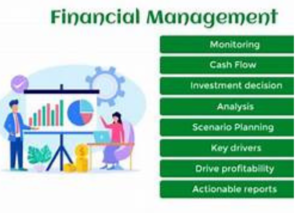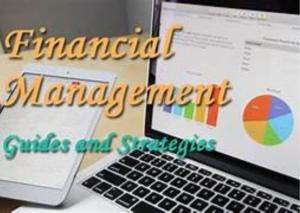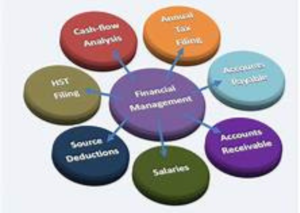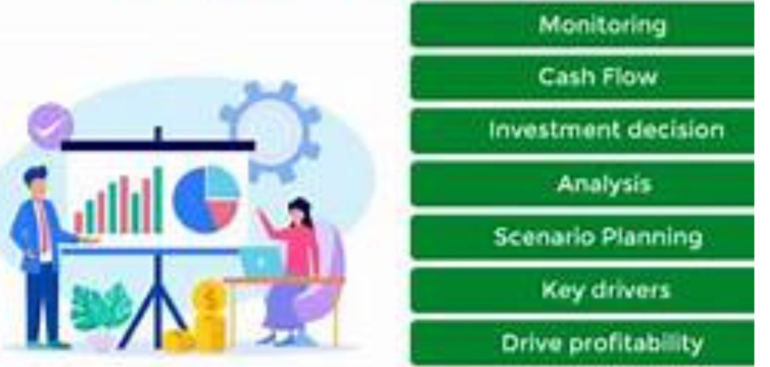Vital Monetary Administration: Definition, Advantages, and Model
What Is a Key Monetary Administration?
Strategic financial management is the management of a business’s finances with the goal of success—achieving the business’s long-term goals and objectives and increasing shareholder value over time.
 Figuring out Key Monetary Administration
Figuring out Key Monetary Administration
Critical monetary administration is tied to generating profit for the business and guaranteeing an acceptable profit from speculation (return on initial capital investment). Monetary administration is achieved through business financial plans, setting up monetary controls, and economic direction.
Before managing itself tactically, a company must precisely define its objectives, identify and quantify its available and potential assets, and devise a specific plan to use its finances and other capital resources to achieve its goals.
Strategic management includes understanding, appropriately allocating, and obtaining a company’s assets and liabilities and monitoring operational financing items like expenditures, revenues, accounts receivable and payable, cash flow, and profitability.
Critical monetary management likewise includes constant assessment, planning, and change by staying zeroed in and on target toward long-haul objectives. Ad hoc solutions to short-term issues that maintain a company’s long-term goals are part of strategic management.
Vital monetary administration incorporates surveying and managing an organization’s capital structure, including the blend of obligation and value finance, to guarantee its long-term viability.
Vital versus Strategic Monetary Administration
The expression “vital” alludes to monetary administration rehearses zeroed in on long haul accomplishment rather than “strategic” the board choices connected with transient situating. If an organization considers critical contemplations rather than strategic ones, it settles on monetary decisions given long-haul goals instead of momentary measurements. A company sometimes has to accept losses right now to achieve those outcomes.
“Key” the board centers around long haul achievement, and “strategic” the executives connect with transient situating.
Hence, compelling critical monetary administration might include forfeiting or correcting momentary objectives to accomplish the organization’s drawn-out goals effectively. For instance, assume an organization failed in a total deficit over the previous year. It might diminish its resource base by shutting offices or lessening staff, diminishing working costs. Making such strides might bring about rebuilding costs or other one-time things that adversely influence the organization’s funds further in the present moment, but they better position the organization to prevail in the long haul.
These present moment versus long haul tradeoffs frequently should be made given different partners. For example, investors of public organizations might teach the executives about choices that adversely influence an organization’s portion cost for the time being, even though similar choices reinforce the organization’s drawn-out well-being.
$119,000
The typical compensation of an Essential Money Director in the US is as per ZipRecruiter. That equates to approximately $57 per hour.1 The Elements of Strategic Financial Management A company will implement strategic financial management throughout its operations. This entails designing elements that effectively and efficiently utilize the company’s financial resources. Here, a firm should be inventive, as there is no size-fits-all way to deal with crucial administration, and each organization will devise components that mirror its specific requirements and objectives. Even so, some of the more normal components of critical monetary administration incorporate the accompanying.
Arranging
Characterize goals definitively.
Measure and identify the potential and existing resources.
Compose a particular business monetary arrangement.
Planning
Assist the organization with working monetarily and proficiently and diminish squandering.
Determine which areas have operating costs that are higher than the budgeted amount.
Ensure enough liquidity to cover operating costs without relying on other resources.
Find out where a business could better use its earnings to achieve its objectives.
Overseeing and Evaluating Hazard
Distinguish, examine, and moderate vulnerability in speculation choices.
Assess the potential for monetary openness; inspect capital consumptions (CapEx) and work environment strategies.
Utilize risk measurements like level of working influence computations, standard deviation, and worth in danger (VaR) techniques.
Laying out Continuous Systems
Gather and dissect information.
Make financial decisions consistently.
Variance, or differences between budgeted and actual results, should be tracked and analyzed.
Distinguish issues and make suitable remedial moves.
Strategies Based on Industry In the same way that financial management strategies vary from company to company, industry and sector-based strategies may also vary.
 Firms that work in rapidly developing ventures—like data innovation or specialized administrations—must pick methodologies that refer to their development objectives and determine positive development. Their targets, for instance, could include selling another item or expanding gross income within the following year.
Firms that work in rapidly developing ventures—like data innovation or specialized administrations—must pick methodologies that refer to their development objectives and determine positive development. Their targets, for instance, could include selling another item or expanding gross income within the following year.
However, organizations in sluggish developing ventures—like sugar assembly or coal power creation—could pick targets that emphasize safeguarding their resources and overseeing costs, like diminishing managerial expenses by a specific rate.
What Are the Advantages of Key Administration?
A drawn-out center assists an organization with keeping up with its objectives, even as tricky times or valuable open doors go back and forth. Subsequently, essential administration helps keep a firm beneficial and stable by adhering to its time-run plan. Critical administration sets organization targets and rules for accomplishing those goals even as difficulties arise.
What is strategic financial management’s scope?
Critical administration can include all parts of a company’s drawn-out targets. Monetary administration, which frequently provides cost decrease, risk the board, and planning, assumes a crucial part.
What is strategic financial management’s goal?
Critical monetary administration guarantees that drawn-out objectives are sufficiently anticipated and finally met.

